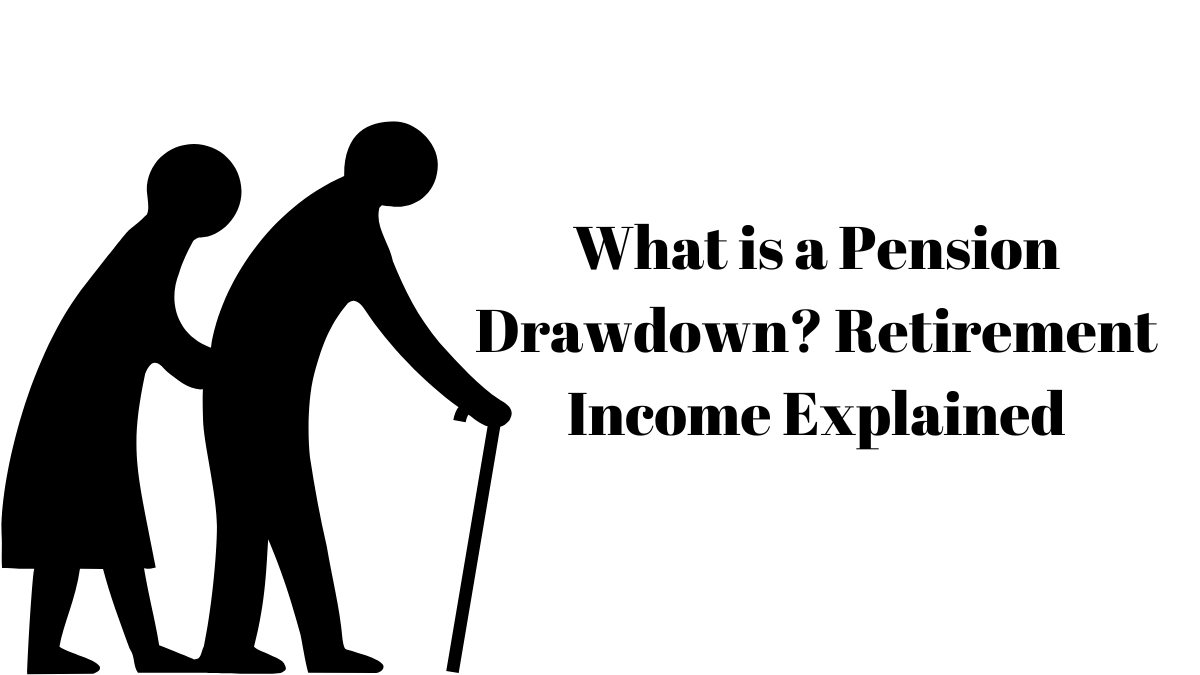Retirement is an important stage in life that should be well-planned financially. A critical aspect of this planning is knowledge of the Pension drawdown and how it complements retirement income. This paper seeks to define a Pension drawdown and how it fits in the overall retirement income landscape.
Contents
What is a Pension drawdown?
A Pension Drawdown, which can be referred to as income drawdown or flexible drawdown, is a way to access your pension savings by keeping the funds invested. Pension drawdown means that you can draw a portion of your pension savings as income while the rest of the money remains invested.
You can convert your pension to a drawdown starting at 55 (57 from 2028). You can also draw your pension flexibly, taking it out when and as you wish to. Any money you do not take out is still invested so you can continue to grow your pension even after retirement.
How Does Drawdown Work?
Once you are 55 years old (57 from 2028), you can start enjoying your personal or workplace pension. You can either take up to 25% as a tax-free lump sum or take 25% of each withdrawal tax-free. This tax-free amount does not eat into your personal allowance, but once your withdrawals exceed this limit, you will have to pay income tax.
It is also important to contemplate when and how you draw from your Pension Drawdown to avoid entering a higher tax bracket. Flexibility is one of the core benefits of a Pension Drawdown. You can take an income whenever you like and purchase an annuity or retirement product with your savings at any time.
Retirement Income Explained
Retirement income is a stream of payments made to employees after they retire based on accumulated savings during their working years. The primary purpose of this income is to provide financial assistance to people aged 50 years and above during retirement.
Retirement income is one of the most important components of financial planning, and it has many advantages for people approaching retirement. It allows for savings formation that gets over the working years and can be used as a passive income source after retirement.
Pros and Cons of Pension Drawdown
Some pros are here:
Pros
- Flexibility: A Pension Drawdown allows you to be flexible about the amount and timing of your withdrawals. You can withdraw as much as you want, depending on your changing needs and situations.
- Potential for Growth: Your pension savings are invested and will, therefore, grow if the investments do well.
- Tax Efficiency: You can withdraw up to 25% of your pension pot as a tax-free lump sum. The remaining withdrawals will be taxed at your marginal rate.
Cons
Some cons are:
- Investment Risk: The pension pot value can also decrease with the market performance. This could lower the drawdown income that you can get in the future.
- Longevity Risk: You could end up running out of your pension savings if you withdraw too much too early.
- Complexity: The Pension Drawdown can be quite complicated, with the need to continue making decisions about investments and withdrawal rates.
Is pension drawdown right for me?
Whether a pension drawdown is right for you depends on several factors:
- Flexibility: If you want some flexibility in how you use your pension funds, a pension drawdown could be appropriate for you.
- Investment Risk: Withdrawal from pension involves leaving your pension pot invested, hence there is an ongoing risk. If you don’t like the risky nature of investing during retirement then drawdown is not the best option for you.
- Longevity Risk: The danger is that you may spend your pension savings before you die. You have to make sure you have a retirement income that will last throughout your retirement.
- Management: It is necessary to conduct regular reviews of where you’re invested and how much income you’re taking for drawdown pensions. If you do not like dealing with these aspects, you may wish to explore other alternatives.
- Financial Advice: It is advisable to seek financial counsel before making a decision to go for drawdown pension. A financial advisor can explain the risks and benefits and design a plan that meets your requirements.
Pension Drawdown Management Tips
Here we have given some Pension Drawdown management tips:
- Seek Financial Advice: Before deciding to take a Pension Drawdown, it is advisable to seek financial advice. A financial adviser can help you understand the pros and cons and devise a plan that fits your needs.
- Regular Reviews: Check your Pension Drawdown regularly to make sure it is on course to provide you with the income you require. This involves looking at your investments and withdrawal rates.
- Diversify Investments: Diversify your investments to minimize risk. This can safeguard your pension pot from market fluctuations.
Conclusion
In conclusion, a Pension Drawdown could provide a flexible and potentially tax-efficient retirement income source. Nevertheless, one should also be aware of the risks that are associated with it and how to manage one’s pension pot to ensure that it provides sufficient income during retirement.
Frequently Asked Questions
What is a Pension Drawdown?
A Pension Drawdown is a means of accessing your pension savings without withdrawing the funds. It enables you to draw a part of your pension as income while the residual funds are invested.
What is a Pension Drawdown?
If you are 55 years old (57 years old from 2028), you can change your pension to a Pension Drawdown. You can withdraw up to 25% tax-free as a lump sum or 25% of each withdrawal tax-free. All the rest of your withdrawals will be taxed at your marginal rate.
What are the benefits of a Pension Drawdown?
Benefits include the ability to take out money when you want and how much you want, the ability to grow because your pension savings remain invested, and tax efficiency.
What are the weaknesses of a Pension Drawdown?
The disadvantages are investment risk, where the value of your pension pot can fall depending on market performance, longevity risk where you withdraw too much too soon, and the difficulty of managing a Pension Drawdown.
What is retirement income?
Retirement income is a series of payments provided to employees after retirement as savings accrued from their working years. This income aims to provide financial assistance for persons over 50 years old during their retirement period.
Read More :
- How Many ISAs Can I Have?
- What is a Sole Trader?
- DWP PIP Rates 2024: New PIP rates 2023 to 2024 in UK
- What Are HMRC Tax Refunds?
- National Minimum Wage UK 2024: Complete Guide
- When Will Interest Rates Go Down?
- Is 50k a Good Salary in the UK?

I am a dedicated lifestyle and fashion enthusiast, always looking for the latest trends and timeless styles. With a flair for creativity and a passion for self-expression, I provide fresh insights and tips on elevating everyday living and personal style.
